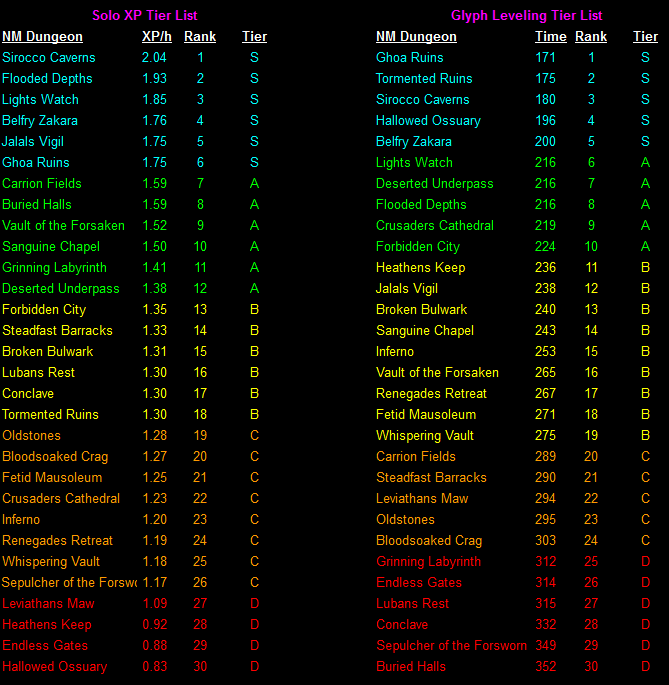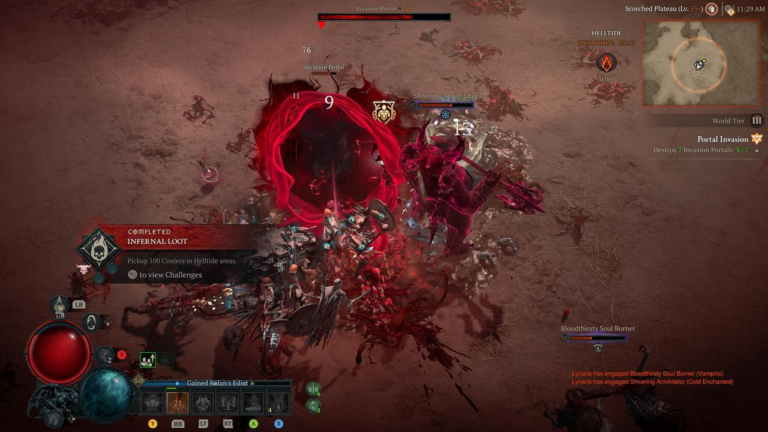As you get further into Diablo 4 endgame and encounter harder content, understanding how to build solid defenses on your character becomes mandatory. Unfortunately, the survivability mechanics are quite complex and not explained very well via in-client tooltips.
In this article, we'll cover all the crucial defensive layers players have to consider while investing into their characters. We'll go over most important Diablo 4 defenses such as Armor, Resistances, and Damage Reduction.
If you have any questions after reading this guide, feel free to ask questions in our Discord. If you're interested to learn how damage is calculated in Diablo 4, check out this article.
Armor
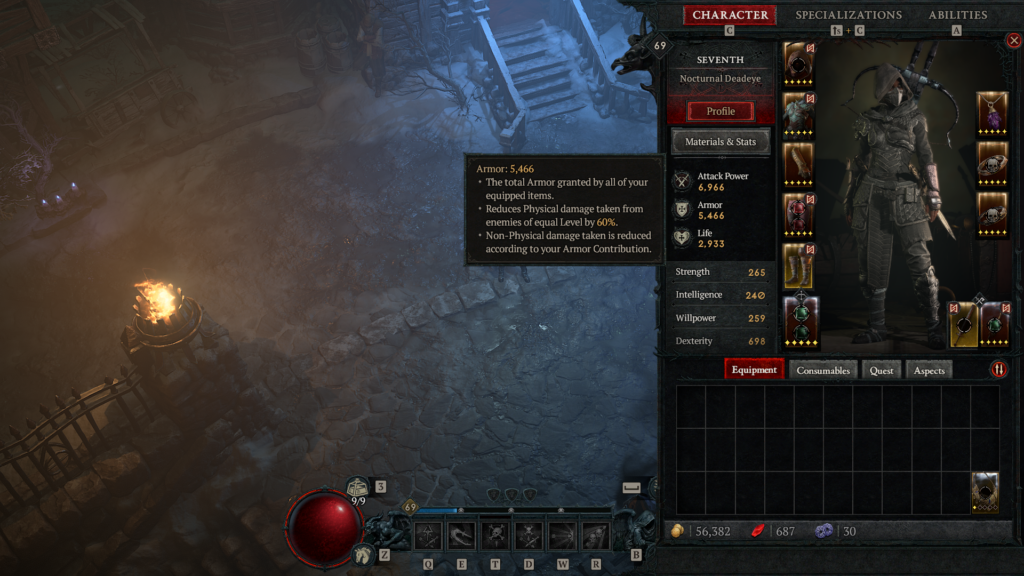
Armor is one of the most important defensive stats your character can invest into, and it's relevant no matter what class you're playing. Both melee and ranged playstyles massively benefit from this stat, and it's hard to reach a point where Armor hits diminishing returns.
Armor reduces all incoming Physical damage as determined by your total Armor stat value shown in the character screen. The exact formula that converts Armor into damge reduction is unknown. The damage reduction cannot exceed 85%, meaning that your Armor has an effective cap.
Note: Here and below, when damage reduction is written out without capitalization, it means we're talking about damage reduction in the broad sense. When written out as Damage Reduction - we're talking about the Damage Reduction stat in Diablo 4.

However, it is very hard to reach an effective cap. The amount of Armor you need to gain 1% damage reduction keeps increasing as you level up - as shown in the graph above. Additionally, level difference between you and your enemies does also significantly affect the damage reduction value of Armor.
The bigger the gap in levels between you and monsters - the less effective Armor becomes. You will rarely run into this issue in the open world since its level scales with the player. However, in high-tier Nightmare Dungeons monsters can scale up to level 150, which means its nigh impossible to hit Armor cap against them.
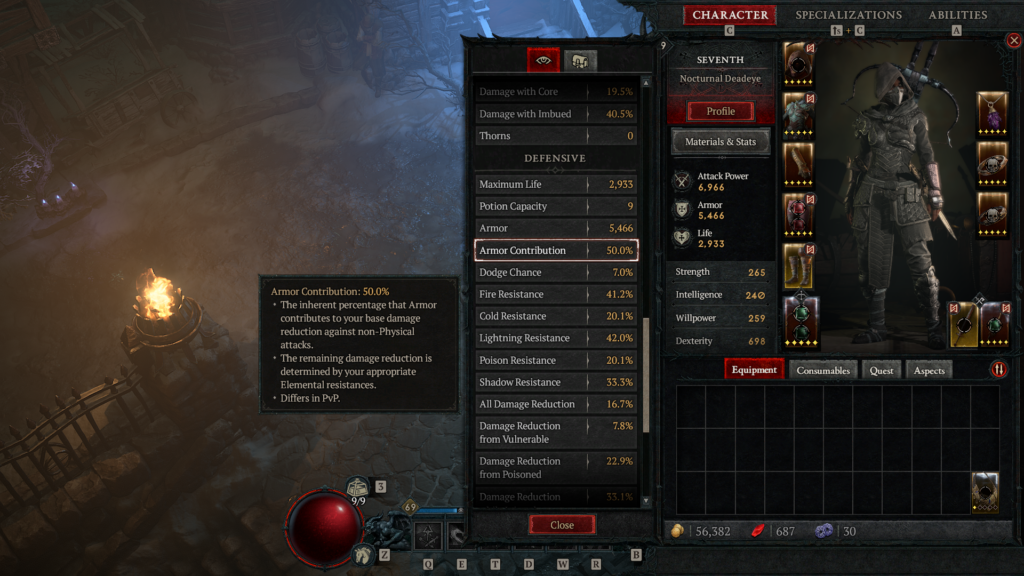
What makes Armor particularly strong in Diablo 4 is that it also acts as a layer of defenses when it comes to non-Physical damage. An Armor Contribution stat you can find in the character screen determines that 50% of Armor is also counted towards damage reduction against Fire, Cold, Lightning, Poison and Shadow Damage!
It means, if your Armor reduces the Physical damage taken by 60%, it also reduces all non-Physical Damage taken by 30%. So, by building Armor you can't ever go wrong - you're double-dipping into protection against multiple types of damage.
Sources of Armor
- Strength attribute (1 Strength = 1 Armor);
- Static values on Armor items (Helm, Chest, Gloves, Pants, Boots);
- Affixes on items (Helmet, Chest, Pants, Amulet);
- Aspects (ex. Aspect of Disobedience ;
- Gems (Skulls - socketed into Jewellery);
- Skills and Paragon Nodes;
- Elixirs (Iron Skin, Iron Barb).
Resistances
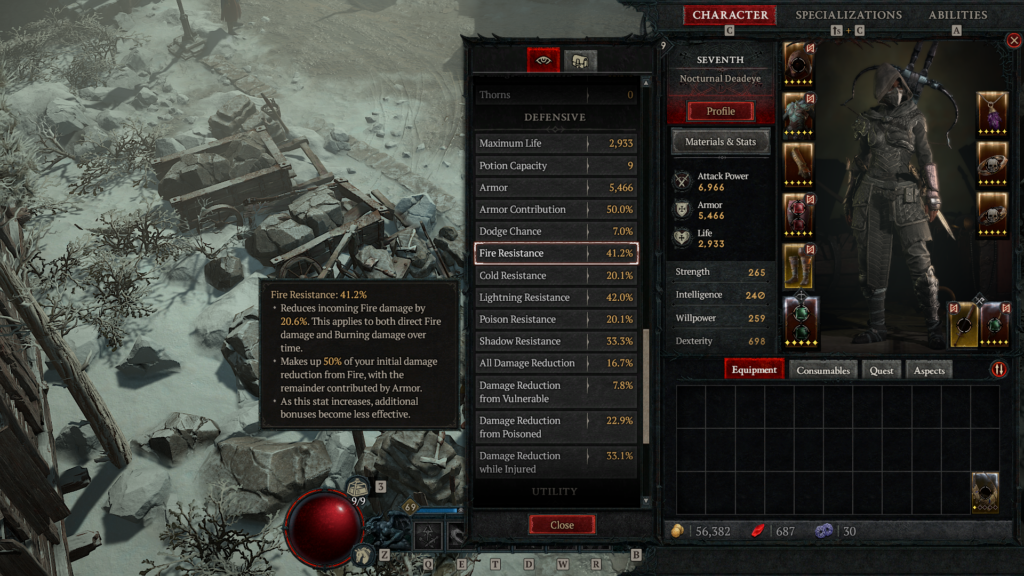
Resistances in Diablo 4 are far from straightforward in how they work. Interestingly enough, they are also much less potent than any other form of defenses. You should not prioritize Resistances on your gear or anywhere else - take those stats only if you have no other choice or if you reap additional significant benefits from stacking Resistances.
Contrary to Armor, which stacks additively (all Armor points you have are simply added together), Resistance stacks multiplicatively. It means, if you have 20% Fire damage reduction granted by your Fire Resistance and get additional 20%, you will not reduce 20 + 20 = 40% of Fire damage. Instead, you will reduce 0.2 + 0.2 * (1 - 0.2) = 36% Fire damage.
Additionally, World Tiers 3 and 4 inflict penalty on your Resistances. Nightmare (World Tier 3) and Torment (World Tier 4) cut your Resistances by 20% and 40% respectively. So, for example, if you're playing in World Tier 4, 36% value becomes 0.36 * (1 - 0.4) = 21.6%.
And that's not even the end of it. Remember how Armor contributes to half of the non-Physical damage reduction? Well, that also means that the actual damage reduction you gain from Resistance is actually half of what the Resistance value is! For example, 21.6% Fire Resistance prevents only 10.8% of incoming Fire damage.
All of this means that Resistance stats hit diminishing returns very quickly, and in most cases they are not worth investing into. The base Resistances you gain from Intelligence and Jewellery items are enough to cover your needs. You don't have to hunt down Resistances on substats, Paragon boards, or elsewhere. The only exception is if you're target-farming specific hard bosses that have certain types of damage, such as the level 100 Capstone Boss - Echo of Lilith.
Sources of Resistances:
- Intelligence attribute (100 Intelligence = 5% Resistance to All Elements);
- Implicit values on Jewellery items (Amulet, Rings);
- Affixes on items (Helmet, Chest, Boots);
- Gems (Ruby, Sapphire, Topaz, Amethyst, Emerald, Diamond - socketed into Jewellery);
- Skills and Paragon Nodes;
- Elixirs (Elixir of Resistance).
Damage Reduction

Alongside Armor, Damage Reduction is the second crucial stat that will massively increase the survivability of your character. It represents the layer of Diablo 4 defenses that kicks in after Armor and Resistances have done their work and further reduces the damage your take by set percentage.
Similar to Resistances, Damage Reduction stacks multiplicatively. It means that as this stat increases, additional bonuses become less effective, so it's impossible to become invincible just by stacking Damage Reduction.
Damage Reduction stat often comes with conditions - Damage Reduction while Injured, Damage reduction from Poisoned, etc. When you take an instance of damage, the game checks for all the conditions and calculates all the bonuses - you guessed it - multiplicatively.
The only time when Damage Reduction stacks additively is when it comes to certain Skill scalings. For example, for the purposes of the Rogue skill Dark Shroud , each new Shadow adds Damage Reduction to the previous value. However, when you combine Dark Shroud's Damage Reduction with other sources, the big equation still remains multiplicative.
However, despite its diminishing returns, what makes Damage Reduction much more valuable than Resistances is that it helps you no matter the type of the damage you take, whether Physical or non-Physical. While Armor and Resistances work together to reduce the damage, Damage Reduction is the next separate layer of Diablo 4 defenses, acting effectively as a whole standalone multiplier to your survivability.
Sources of Damage Reduction:
- Affixes on items (Chests, Pants, Boots, Amulets);
- Aspects (ex. Aspect of Might );
- Skills and Paragon Nodes;
- Class-specific mechanics (ex. Fortify).
Example
Let's tie everything in together by breaking down an example. Let's say you face an incoming hit of 500 Fire damage while being Injured (under 35% Life) and you have:
5556 Armor which equates to 60% Physical damage reduction at Level 70;
41.2% Fire Resistance;
16.7% All Damage Reduction, 33.1% Damage Reduction while Injured.
Armor contibutes half of its value towards non-Physical damage, meaning it will reduce 30% of damage. Fire Resistance contributes another half, adding another 20.6% reduction. The damage taken calculation at this stage is:
500 * (1 - (0.3 + 0.206)) = 247
Next, the Damage Reduction kicks in to further reduce the incoming hit of 247 Fire Damage. Since you're Injured, both All Damage Reduction and Damage Reduction while Injured apply, so the equation becomes:
247 * (1 - (0.167 + 0.331*(1-0.167))) = 136
All of your defensive layers working together have allowed you to reduce the incoming damage by a total of 72.8%!


